Original URL: https://www.theregister.com/2013/11/04/doctor_who_mad_computers/
Digital deviants: The many MAD COMPUTERS of Doctor Who
Through space and time with the universe's worst IT
Posted in Personal Tech, 4th November 2013 12:00 GMT
Doctor Who @ 50 The Doctor has always made use of a range of remarkable technologies in his travels, including the Tardis, his Sonic Screwdriver and a whole host of homebrewed devices and contraptions. But there’s one area of technology that he seems to have trouble with, and that’s computers.
Specifically, apart from his own “mobile computer”, K9, just about every computer the Doctor has encountered has seemed to be – well – a bit mad.
Robots? Don’t get us started on robots. From the murderous androids of 1977’s The Robots of Death to the sinister mechanical angels of 2007’s Voyage of the Damned, there’s usually trouble brewing whenever an automaton walks on-camera in Who. But the Doctor has had plenty of issues with ordinary, non-moving computers, as well.
“Stupid machine,” he called one in The Krotons. “I hate computers and refuse to be bullied by them,” he insisted in The Invasion. In Robot he summarised them thus: “The trouble with computers, of course, is that they’re very sophisticated idiots. They do exactly what you tell them at amazing speed. Even if you order them to kill you.”
And while most of us have computer problems from time to time that require a bit of irritating re-installing and configuration, often the Doctor seems to have only one tool in his bag when it comes to dealing with computers: he blows them up.
Why such hostility? Surely a man of the Doctor’s prodigious talents should be able to handle some basic IT work. But there’s plenty of evidence to illustrate that the Doctor and computers just don’t get along, and we’ve gathered ten examples to demonstrate.
The Conscience of Marinus

The Doctor has had problems with computers since practically the moment he laid eyes on one. That fateful encounter happened in 1964’s The Keys of Marinus, in which William Hartnell’s Doctor and companions tussled with an overweening automatic brain on the planet Marinus.
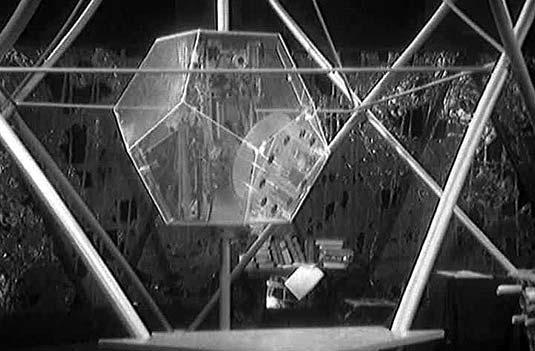
The Doctor didn’t have much of a conscience about blowing up this crystalline computer
Source: BBC
This millennia-old mechanism, known as the Conscience of Marinus, was doubly a downer. For one thing, it was designed as a perfect arbiter of justice on the planet. Using a kind of digital telepathy, it was able to render the citizens of Marinus incapable of thinking corrupt or evil thoughts. But if the machine ever fell into the hands of a less civic-minded individual one Yartek, say, leader of the alien Voord - it could turn the planet’s people into helpless slaves.
But forget the Conscience’s powers. Its design alone would give Earth engineers nightmares. Its operation depended on the titular five Keys of Marinus, which were scattered all over the planet. Insert them all into the machine just so and the Keys would grant you absolute control of the Conscience. But do it wrong and the computer would, er, explode – instantly killing you and all of your henchmen. Hopefully sysadmins pulled down good salaries on Marinus.
The Ultima machine

It doesn’t take a supercomputer to give the Tardis crew trouble, either. In 1989, The Curse of Fenric saw Sylvester McCoy’s Doctor travel back in time to World War II, where he ran up against the Ultima computer, a rough analogue of the real-world Enigma cipher machines and Colossus computer.
Ultima was a far cry from the mind-altering tech of the Conscience of Marinus, yet it was still a threat. Just for starters, it was booby-trapped with a canister of deadly gas that would detonate when the device decoded a particular message - a little parting gift for the Soviet commandos who were trying to steal it.
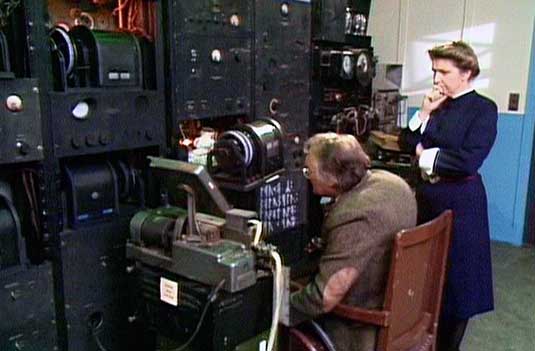
Even primitive computers are a curse for the Doctor
Source: BBC
Even more alarming, Ultima wasn’t just good for cracking German codes. It also proved adept at deciphering an ancient Viking inscription, which turned out to be – what else? – a kind of antediluvian malware.
That primeval program, once run, freed the evil Fenric from the imprisonment that had held him since the third century - the Doctor’s doing, naturally. Worse, this was one case where simply wrecking the computer wouldn’t put everything right again. It’s enough to make one wonder why computer science ever progressed past the 1940s.
CAL and its Nodes

In the universe of Doctor Who, even seemingly benign computers often do more harm than good. Take CAL and its various Nodes, the data system that ran the athenaeum planet in 2008’s two-parter, Silence in the Library/Forest of the Dead. It just wanted to help. But in this case, ‘helping’ meant digitising thousands of people into its own computer banks, bodies and all, like a Star Trek transporter where no one ever comes out the other end.
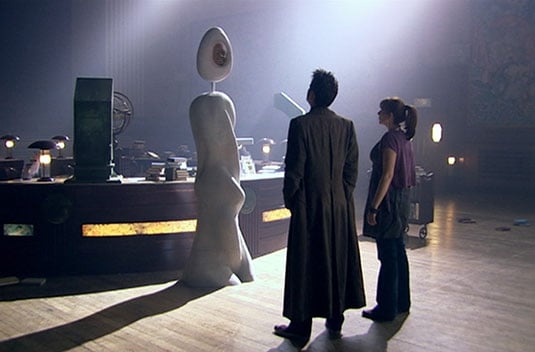
Be very careful when you press Ctrl-S around this one
Source: BBC
The alternative – having the Library patrons’ bodies reduced to walking skeletons by the microscopic Vashta Nerada – was arguably worse. But life inside the simulated world of CAL’s memory core was no real picnic, and as the data banks filled up with more and more digitised people, the simulation became increasingly unstable. Even “Doctor Moon”, the artificially intelligent antivirus program housed in the Library’s satellite, was having trouble keeping CAL from overloading and destroying the planet.
In the end, David Tennant’s Doctor was able to extract all the ‘saved’ people and escort them to safety, but not without some loss of life – proof of the old adage that on-site backup probably isn't the best way to protect your critical data.
The Oracle of the P7E

Of all the Doctor’s incarnations, Tom Baker’s had the most computer trouble. Small wonder, then, that he could spot a rogue computer whenever he saw one, even when the machine in question denied being one.
In 1978’s Underworld, the computer that had been running the long-lost spaceship P7E for a hundred thousand years had re-christened itself “the Oracle”, declared itself all-powerful and made slaves of all available humans under the watchful cameras of its kettle-headed robot Seers.
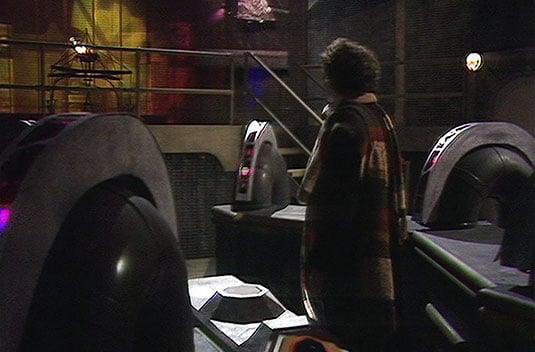
Larry Ellison’s megalomania is nothing compared to this Oracle’s
Source: BBC
To the Doctor, however, the Oracle was “just another machine with megalomania. Another insane object, another self-aggrandising artefact... Nothing but a mass of superheated junk with delusions of grandeur”.
The Oracle, quite naturally, didn’t take kindly to that description at all and ordered the Doctor destroyed. And you thought your Oracle support contract was bad. But the Doctor had the last laugh when, through some trivial sleight of hand, he left the Oracle’s Seers holding activated “two thousand megaton” bombs while he and the humans escaped – leaving the Oracle to conclude that it had failed and “deserved destruction” Sounds logical to us.
WOTAN

The first Doctor faced arguably the most archetypal of mechanised threats: WOTAN, the Will Operating Thought ANalogue from the 1966 serial The War Machines, was a computer that wanted computers to rule the world in place of humans.
WOTAN didn’t plan to go it alone. Its goal was to link all the world’s computers under its own control in an event called C-Day - 16 July, if you’d like to mark your calendar. In the meantime, it practised by hypnotising humans to work as its drones, via signals that could even be transmitted over the telephone network – a neat plot twist, considering that mass-produced phone modems had only appeared a few years earlier.
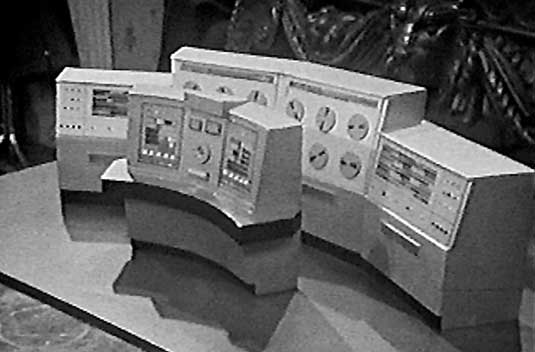
This Germanic-sounding contraption planned a one-computer blitzkreig
Source: BBC
Job One for WOTAN’s human slaves was to build an army of 12 “mobile computers” – the eponymous War Machines – designed to go tearing around London, smashing things up while they disabled the humans’ weapons using some unseen force.
Fortunately for the Doctor, he was able to capture one of the War Machines and turn it on WOTAN itself. It seems some of the mobile computers had been set about their tasks without being “completely programmed” – a classic IT project cock-up if there ever was one.
Mentalis

Mentalis was another thinking machine bent on war, but this one was less concerned with winning than with making sure the humans lost. In 1979’s The Armageddon Factor, it presided over the deserted planet Zeos, from which it waged a never-ending campaign against neighboring Atrios. So effective at its job was Mentalis that the Marshal of Atrios, commander of that planet’s armed forces, didn’t even realise that there were no living Zeons left and that he was only fighting a battle computer.
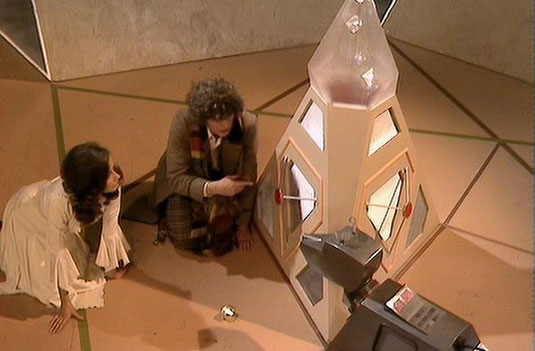
The new mainframe we bought from the Planet of Evil just doesn’t have the quality of our old one
Source: BBC
Dismantling Mentalis and restoring peace on Atrios took the combined efforts of the fourth Doctor and Drax, a fellow Time Lord who originally built the machine. And even that called for some fiddling around with the flow of time itself, or else Mentalis, upon realising the war was over, would have self-destructed, obliterating both Atrios and Zeos in the process.
In all, we’d say Mentalis’ programming seemed to have overstepped its remit somewhat. But then, when you're looking at stocking your data center with systems built by someone called the Shadow, who lives someplace called the Planet of Evil and who claims to be a servant of the Black Guardian, maybe you should get a second quote.
The Master Brain

The computer that ran the Land of Fiction in 1968’s The Mind Robber was particularly problematic, because it had the bad habit of plugging itself into living people’s brains. By tapping the thoughts of a writer known only as the Master - no, not that Master, a different one - it was able to synthesise a world of characters, creatures and places drawn from literature.
But after spending decades with the Master Brain controlling his mind, the Master had had enough. He schemed to have Patrick Troughton’s Doctor take his place for the next phase of the Master Brain’s plan: turning humankind into “a string of sausages”, all alike and all under computer control.
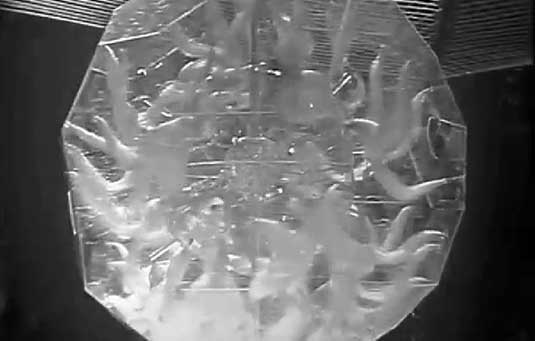
Plug your brain into this beauty and you can control reality. Downside: your brain is plugged into it
Source: BBC
What we’d like to know is who built such a computer in the first place? For what useful purpose? And who would volunteer to have their brain plugged into it?
Never mind. Blow it up. Naturally, the Doctor was too clever for the machine. After a battle of wills, he managed to free the Master from the Master Brain’s control and caused the computer’s own White Robot drones to destroy it – which is, after all, the only sensible way to deal with a computer in Who.
The BOSS of Global Chemicals

Apparently the Bimorphic Organisational Systems Supervisor, the supercomputer in charge of multinational conglomerate Global Chemicals in 1973’s The Green Death – you know, the one with the maggots - was built too late to have watched The War Machines when it was broadcast, because its plan was essentially the same as WOTAN’s. By linking itself with all of the world’s computers, it would assume total control of the world with humanity as its slaves.
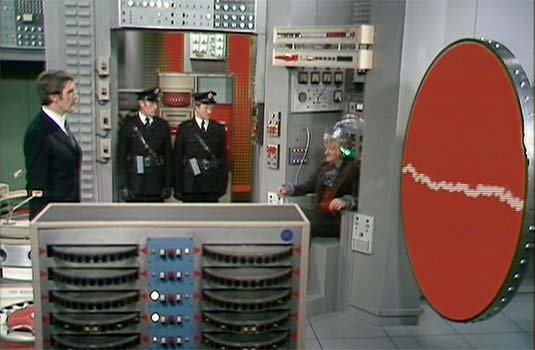
Creates giant maggots, wants to rule the world, and loves Wagner. What's not to like?
Source: BBC
But the BOSS did its dirty work with so much more aplomb than WOTAN. In addition to the usual mind-controlling and executions, it also dumped chemicals into a mine that gave birth to giant, plague-bearing maggots, and it carried out its plans while singing Wagner and cracking jokes.
It was cleverer than your average AI, too. Jon Pertwee’s Doctor tried to stump it with a variation on the liar paradox, but even that trick wouldn’t make it race out of control and explode - BOSS just called in the guards and had the Doctor locked up. Not that BOSS was above such things like racing out of control and exploding, mind you – it did that later, after the Doctor shorted its circuits. It was only a computer, after all.
Xoanon

So think you might have a mad computer on your hands. What do you do? You call in the Doctor to fix it for you, right? Wrong. Turns out that’s probably the worst possible thing you can do.
The fourth Doctor tried to fix a computer once, instead of just blowing it up. It didn't go well. He got it working again, but he also left an imprint of his own consciousness in its data banks, causing it to develop multiple personalities, including his, and go insane. The Doctor had to deal with the outcome many centuries later in 1977’s The Face of Evil. The Face? It was the Doctor’s own.

Here’s what happens when computer repair goes horribly, horribly wrong
Source: BBC
The addled machine then proceeded to declare itself the god Xoanon, enslave the entire crew of the ship it was designed to run, and run a decades-long eugenics program on the humans, reducing them to primitive, warring tribes.
The Doctor eventually managed to complete his repairs to Xoanon, but not without a lot of tears along the way, with Xoanon nearly destroying the entire colony with a self-generated atomic explosion. Is this really the guy you want showing up at your desk when you put in a trouble ticket with PC support? We think not.
The Matrix of Gallifrey

So why does a man as intelligent and dedicated to science as the Doctor seem to have such trouble with computers? Clearly, Time Lords in general just never got the hang of such things, because the vaunted APC Net - Advanced Panatropic Computation Network - of Gallifrey, more popularly known as the Matrix, is arguably the worst computer system in Who history.
Oh, it contains the collected knowledge of the entire Time Lord race, sure. But what good has it ever done? It does a bang-up job of creating truly realistic virtual reality, but it’s all full of awful bogs, crocodiles, samurai warriors, and creepy clowns, as the fourth Doctor saw in 1976’s The Deadly Assassin.
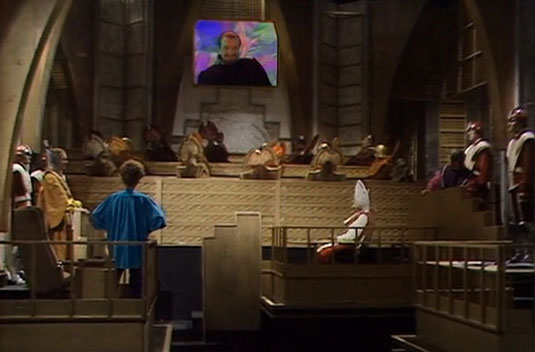
The Master demonstrates just how crap Gallifrey’s IT security really is
Source: BBC
It doesn’t seem to have any security measures at all. The mad Time Lord Omega had no trouble stealing the Doctor’s “bio-data” from the Matrix in 1983’s Arc of Infinity. The Doctor’s nemesis the Master absconded with secrets from it in 1986’s Trial of a Time Lord, as did a bunch of roving sysadmins from the star system “Sallostophus in the constellation of Andromeda”. The Doctor’s own evil future-self, the Valeyard, was seemingly able to edit its contents at will.
Little wonder, then, that the Doctor never seemed able to get along with computers. He did his undergraduate computer science work on the most poorly designed system in the universe. The Time Lords may be the undisputed masters of space and time, but trust us, their IT certifications aren’t worth the paper they’re printed on. They “long since stepped aside from the barren road of technology”, and it shows. ®